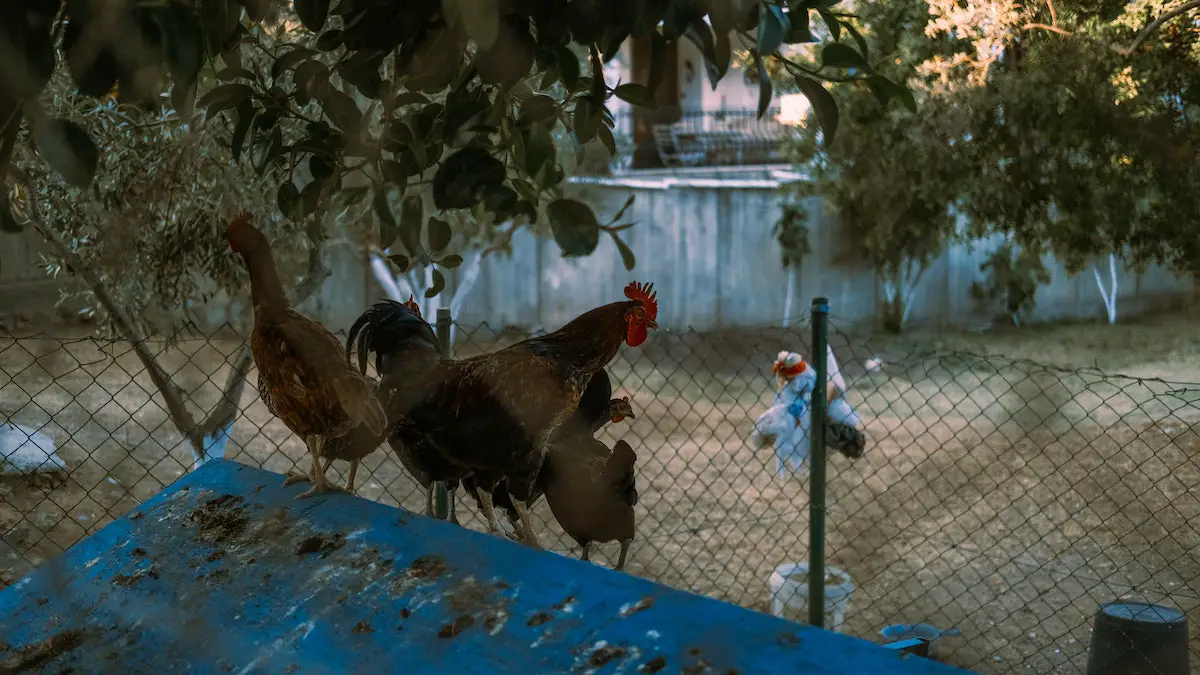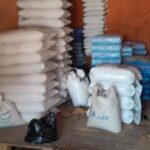Some links on this page may contain affiliate links which means that, if you choose to make a purchase using the link, Agricfy.com may earn a small commission at no extra cost to you. For more information, go to our Affiliate Disclosure Page!
Introduction
Backyard poultry is one of the fastest-growing trends among small and beginning farmers. Poultry is a small-scale animal enterprise that does not require a lot of money, land, time, or equipment.
Before the arrival of your birds, careful planning and preparation will aid in the formation of a healthy flock for your family’s enjoyment and food production.
Backyard fowl can be raised in a free-range manner alongside cows and buffaloes in a loose-housing shed. Chickens, whether domestic or crossbred, are extremely hardy and immune. Breed selection in chicken farming should be based on market demand availability.
You can read more about this different system of raising your chicken in this article.
How To Start A Backyard Poultry Farm
When it comes to backyard poultry farming, there are basic things that are considered to be available before it can pass to be a backyard poultry farm.
Deep Litter and Free Range Method
For farmers, there are numerous advantages to using the free-range system. With this procedure, 100 birds can be raised in a short length of time and with little investment.
You can begin your business by purchasing one-day-old chicks. The birds require the most attention during the first three weeks. During this time, major activities must be completed. They are permitted to roam freely in the backyard once the feathering process has begun.
How To Construct a Shed
To establish a backyard poultry company, you’ll need to build a shed. As a result, we can plan the required shed area.
- The middle of the shed should be 10-12 feet tall, with the sides being 8-10 feet tall.
- Aim for a wall height of 2-3 feet.
- Use chicken mesh around it.
- Make sure the ground is properly paved.
Caring For The Chicken
i. A Day Old Chick
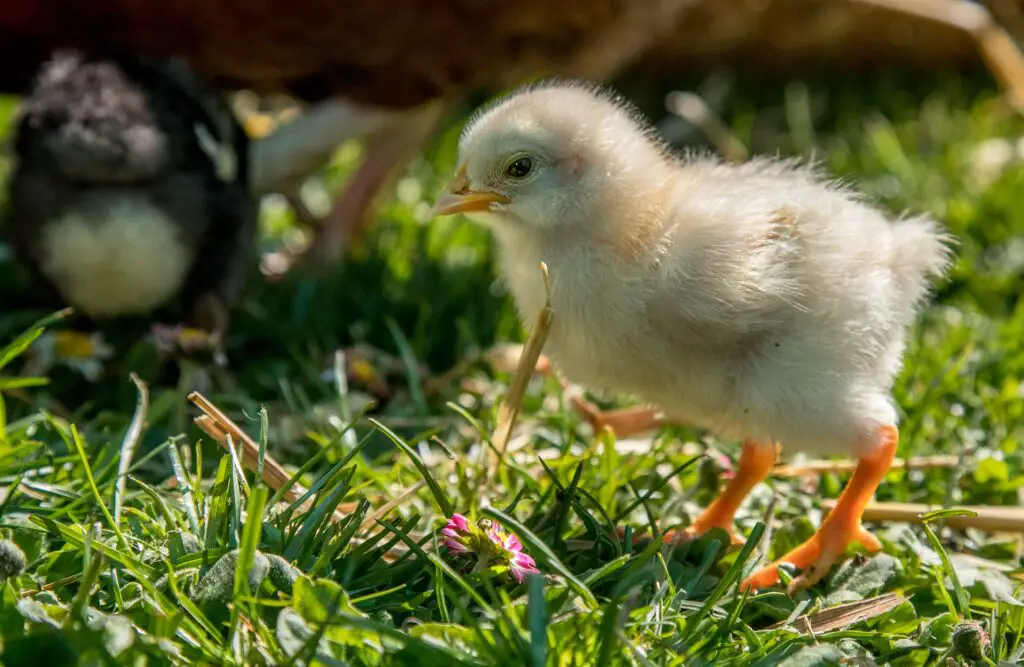
Government and private hatcheries sell one-day chicks in boxes containing hundreds of birds. Before you buy, you should double-check the chicks. Chickens should be healthy, disease-free, and agile. Ensure that the vaccine is given on the first day.
As soon as the chickens arrive on the farm, carefully remove them from the box. Separate the chicks who have already passed away. Take about 1 liter of boiled and chilled water for the rest of them. Mix with 100 grams of jaggery or ethereal powder.
Place them in a brooder with regulated temperature control. They must consume water during the first few hours to avoid death from constipation. You can give them rice or corn husks after around four hours. You chicks can begin eating chick starter meals on day two.
Brooding is required for the first 21 days, after which the chicken’s body feathers will begin to grow. The birds will be able to regulate their temperature.
ii. Growth Stage: (4 to 5 months)
The birds are in this stage of development. Separate the males and females. Males that aren’t wanted can be sold or kept separate for meat production.
During this time, proper physical development is critical. Give them what they need. Allow them to wander the open areas in free-range. Give them the right nourishment and immunizations at the right time.
In this stage, the following vaccines must be administered.
✓ Lasota
✓ Fowl Pox booster
iii. Eggs Laying Phase: (6 to 18 months)
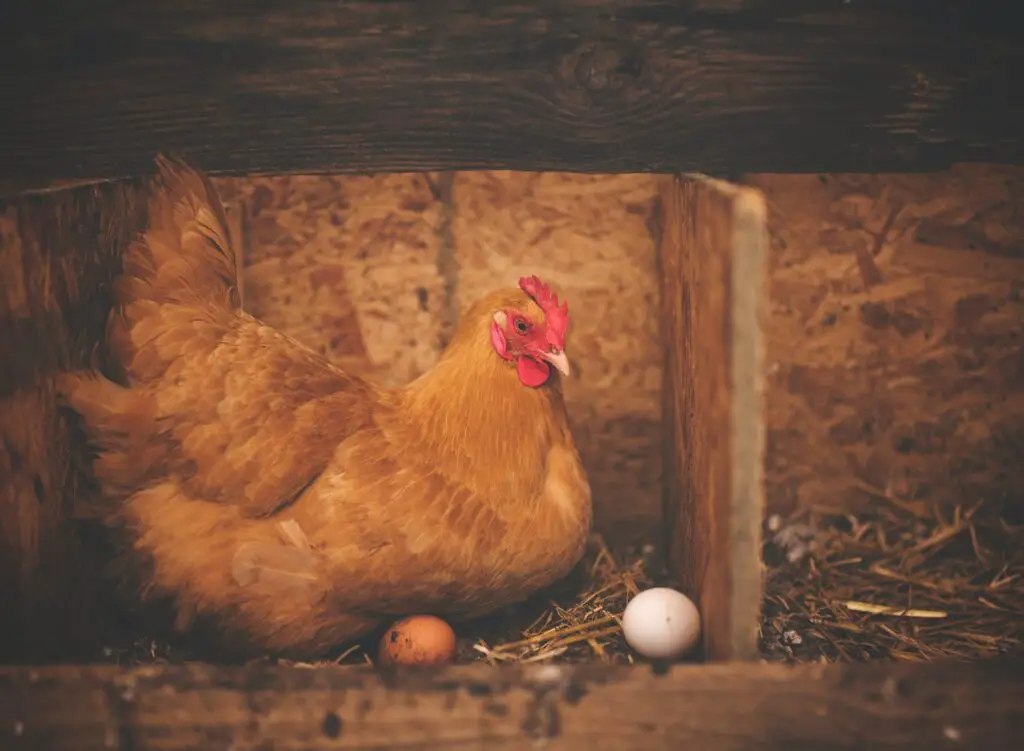
Hens will begin laying eggs at about 24 weeks. Birds require a high-protein diet called Laying Mash, which contains 18-19% protein during this time.
In addition, a calcium-rich diet of 5% should be given. Laying eggs necessitates the use of a nest box. On average, chickens will lay eggs until they are 72 weeks old. Poultry Nest Box in the Backyard
iv. Making a Broody Hen Sit to Lay Eggs
A farmer should have 1 to 10 chickens at a time to hatch eggs. It will make handling many chicklets easier and decrease the incidence of premature fatalities. Place the birds in a circular jar or a straw made of bamboo, patties, or rice.
How To Construct a Brooder
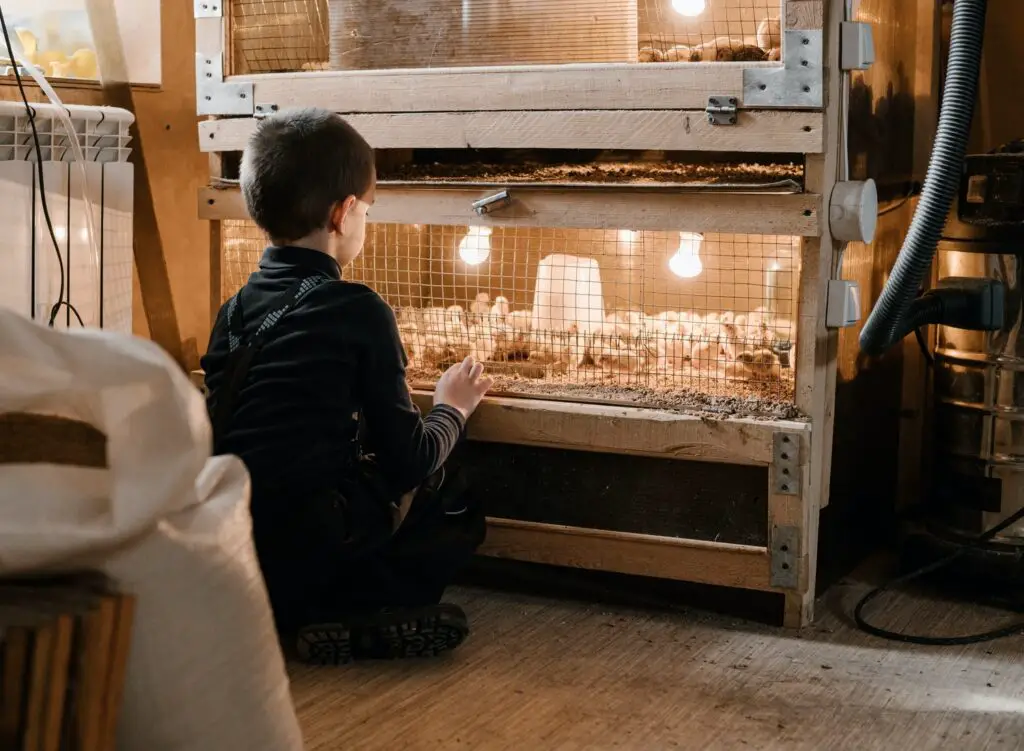
A brooder is a structure that provides artificial heat. It is usually circular, constructed of plastic or metal sheet, and holds 100 to 200 chickens. Use a plastic or metal sheet with a length of 6 to 8 feet and a height of 1.5 meters to make a brooder. We can make a circular form by linking the ends.
Inside, the floor will be constructed of wood powder or rice husk. Cover it with a layer of newspaper. To keep it warm, place an incandescent bulb over it.
To control the temperature, we can install a bulb with a rope that allows us to modify the height. To limit heat loss from above, the bulb should be encased in a plastic cover.
Care To Be Taken While Brooding
- While brooding, exercise caution.
- During the brooding stage, chick mortality is a possibility. You must maintain vigilance at all times.
- Provide the following vaccines on time: Lasota, Gumboro, Infectious Bronchitis, and Fowl Pox vaccine
- Maintain a suitable temperature range in the brooder
- Administer the appropriate dosages of antibiotics, vitamins, and nutrients.
- Provide “Starter” foods, which are high in protein and have an 18 to 19 percent protein value.
- As soon as the 21 days are up, increase the spacing in the brooder littering and hardening
Molting
Feathers will begin to fall from the chicken’s body after 72 weeks, and new feathers will emerge. After that, the chicken will no longer be able to lay eggs, thus you should sell them for meat.
Income-Expenditure
You can get good quality manure from the hens’ excreta in addition to the cash from eggs. You may reduce the cost of eggs even more by giving the chicks leftover food, vegetables, and grains. You might expect to get between 2 to 3 dollars for each chick if we sell them after 72 days.
The surplus income is the source of this higher profit. Backyard poultry farming can be a very profitable enterprise if clean water and timely inoculation are provided. Many farmers run profitable backyard poultry farms.
Common Equipment Used in Backyard Poultry
- Temperature Control

Chickens are tough species with excellent natural temperature regulation. You should, nonetheless, take note of the temperature within their coop. for shutting out cold winter air and other extreme factors, a well-insulated coop is essential.
If you have or intend to have chicks, you’ll need some kind of heating device. Because chicks are unable to control their heat, a heat lamp and a thermometer must be placed in their brooder for optimal care.
2. Feeder

A feeder is a piece of poultry equipment used to feed the birds. Various feeds are often put in the feeder, and the poultry birds begin eating from it. Plastic or metal feeders are commonly used to feed hens.
To protect the health of the chickens, the feeder should be kept clean at all times. Maintain an appropriate quantity of feeders in proportion to the number of birds in the poultry house.
If the number of feeders is less than the number of birds, the birds will not consume enough food and their health will suffer; if the number of feeders is more than the number of hens, the birds will waste food and raise your feeding expenditures.
As a result, keep the number of feeders in proportion to the number of birds in your yard. On average, one feeder should be enough for 10-15 birds.
3. Laying Nests

Laying nests make it easier for chickens to lay their eggs. this tool will assist you in gathering eggs from the nest and will boost egg output.
4. Egg Handling Nest

Transporting eggs from one location to another requires the use of an egg-handling nest or cage. It lowers the chance of eggs being damaged when being transported for marketing purposes.
5. Toys

Chickens like being busy. Put a few chook-friendly toys on your chooks’ run to give them something to flutter about. With these excellent creative ideas, you can turn their home into a playground.
Attach a chicken swing to encourage your chicken to go on adventures and roost. Your chickens will spend hours swinging back and forth while admiring the beautiful view. Chickens with curious beaks love to get their teeth into objects.
Treat your chickens to a treat ball or two—just stuff them with chicken-friendly snacks and roll them around.
6. Water Pot

This piece of poultry gear is necessary for giving water to the birds within the cage. We all know that clean, fresh water is crucial for the health of poultry birds. The water pot should be cleaned regularly.
Water containers come in a variety of shapes and sizes. A simple water pot or a pipeline may be used to provide water. You may run a pipe from one side of the home to the other or utilize a drop water system in a pipeline arrangement.
7. Egg Washer
An egg washer is a piece of machinery that uses egg-washing powder to clean eggs. The egg washer is filled with water, and then with egg washing powder. It’s used to sanitize eggs before they’re delivered.
8. Fly Trap

A flytrap is a piece of equipment used to keep flies out of poultry farms. It aids poultry farmers in their efforts to manage fly populations in their flocks.
9. Ventilation Fan

A ventilation fan is a piece of equipment used to guarantee enough ventilation in a poultry farm. It is also a piece of equipment used to keep the poultry farm cool during hot weather.
Conclusion
Backyard fowl may be kept in a free-range manner, as can cows and buffaloes in a loose housing shed. All of these animals may be kept on the same farm. Domestic or crossbred chickens are very resilient and immune.
Breed selection should be based on market demand and availability in chicken farming. Because good quality chicken is hard to get in the cities, people are willing to pay a higher price for it.
Organic food, which is free of antibiotics, pesticides, and pollutants, is becoming more popular among city dwellers. They’re also ready to pay more for eggs and chicken produced this way.
